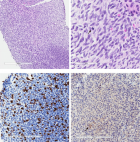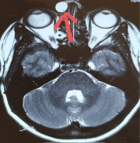Table of Contents
Does serum uric acid play a protective role against tissue damage in cardiovascular and metabolic diseases?
Published on: 18th July, 2017
OCLC Number/Unique Identifier: 7317650796
Previous clinical, observation and epidemiologic studies have demonstrated strong association between serum uric acid (SUA) and cardiovascular disease (hypertension, heart failure, and asymptomatic atherosclerosis), metabolic states (abdominal obesity, diabetes mellitus, metabolic syndrome, insulin resistance) and kidney disease. There is a large body of evidence regarding the role of SUA as predictor of CV events and CV mortality in general population and individuals with established CV disease and metabolic diseases. However, SUA may exhibit protective effects on endothelium and vasculature as well as attenuate endogenous repair system through mobbing and differentiation of cell precursors. Although SUA lowering drugs are widely used in patients with symptomatic hyperuricemia and gout beyond their etiologies, there is no agreement of SUA below target level 6.0 mg/dL in asymptomatic individuals with kidney injury and CV disease and data of ones are sufficiently limited. The short communication is depicted on the controversial role of SUA as primary cell toxicity agent and secondary cell protector against hypoxia, ischemia and apoptosis
Systolic Blood Pressure Determinants
Published on: 11th July, 2017
OCLC Number/Unique Identifier: 7317576308
Hypertension and blood pressure are closely related, and hypertension is directly related with stroke. There are different type of blood pressures such as basal, diastolic, maximum, mean arterial, systolic, mean central venous. The present report examines the determinants of systolic blood pressure for two different groups of cardiac patients. One group of cardiac patients is those who underwent dobutamine stress echocardiography, and the other group is Worcester heart attack study. Many systolic blood pressure determinants, their effects, and correlations have been focused in the current report.
The lifestyle modification effectiveness in reducing Hypertension in a Brazilian Community: From the epigenetic basis of Ancestral Survival to the Contemporary Lifestyle and Public Health Initiatives
Published on: 12th May, 2017
OCLC Number/Unique Identifier: 7317592099
High blood pressure (HBP) is a strong, independent and etiologically relevant risk factor for cardiovascular and therefore, the leading cause of preventable deaths worldwide. Hypertension has high medical and social costs. Due to its many associated complications, the use of medical services create high costs with medications which represent almost half of the estimated direct expenses. Free distribution of more than 15 medications for HyPERtension and DIAbetes (HIPERDIA program) clearly shows the important role of drugs in the Brazilian Government’s effort to tackle these two diseases. Notwithstanding, the prevalence of HBP is rising in parallel with other NCDs. It is known that HBP results from environmental and genetic factors, and interactions among them. Our ancestors were often faced with survival stresses, including famine, water and sodium deprivation. As results of natural selection, the survival pressures drove our evolution to shape a thrifty genotype, which favored/promoted energy-saving and sodium/water preservation. However, with the switch to a sodium- and energy-rich diets and sedentary lifestyle, the thrifty genotype and ancient frugal alleles, are no longer advantageous, and may be maladaptive to disease phenotype, resulting in hypertension, obesity and insulin resistance syndrome. Low-grade chronic inflammation and oxidative stress would be the underlying mechanisms for these diseases. HBP is often associated with unhealthy lifestyles such as consumption of high fat and/or high-salt diets and physical inactivity. Therefore, alternatively to medicine drugs, lifestyle and behavioral modifications are stressed for the prevention, treatment, and control of hypertension. A lifestyle modification program (LSM) involving dietary counseling and regularly supervised physical activity (“Move for Health”) has been used for decades, in our group, for NCDs primary care. Retrospective (2006-2016) data from 1317 subjects have shown the top quartile of blood pressure(142.2/88.5mmHg) differing from the lower quartile (120.6/69.2mmHg) by being older, with lower schooling, lower income and, lower physical activity and aerobic capacity. Additionally, the P75 showed higher intake of CHO, saturated fat and sodium along with lower-diet quality score with a more processed foods. They showed higher body fatness and prevalence of metabolic syndrome along with higher pro-inflammatory and peroxidative activities and insulin resistance. In this free-demand sample, the HBP rate was 51.2% for SBP and 42.7% for DBP. The rate of undiagnosed HBP was 9.8% and only 1/3 of medicated patients were controlled for HBP. After 10 weeks of LSM the HBP normalization achieved 17.8% for SBP and 9.3% for DBP with a net effectiveness of 8.5% and 2.4%, respectively. The reduction of HBP by LSM was followed by increased aerobic conditioning and reduced intake of processed foods along with decreased values of BMI, abdominal fatness, insulin resistance, pro-inflammatory and peroxydative activities. Importantly, once applied nationwide this LSM would save HBP medication for 3.1 million of hypertensives at an economic saving costs of US$ 1.47 billion a year!
Insights for Antihypertensive pharmacotherapy from the “Calcium Paradox” due to Ca2+/camp Interaction
Published on: 27th March, 2017
OCLC Number/Unique Identifier: 7317653234
Several experimental studies performed since 1975, using smooth muscles richly innervated by sympathetic nerves to exclude the autonomic influence of adjusting reflex (rodent vas deferens), showed that L-type voltage-activated Ca2++ channels (VACC) blockers completely inhibited neurogenic contractions induced by electrical field stimulation (EFS) in high concentrations (>10-6 M), but paradoxically increased these EFS-contractions in low concentrations (<10-6 M), suggesting that other mechanisms than only autonomic adjusting reflex are involved in these paradoxical effects. In 2013, we showed that these paradoxical effects of L-type VACC blockers, named by us “calcium paradox” phenomenon, were potentiated by drugs which increase cytosolic cAMP concentration ([cAMP] c-enhancers), such as rolipram, IBMX and forskolin, indicating that this sympathetic hyperactivity drug-induced is due to interaction of the Ca2+/cAMP intracellular signaling pathways (Ca2+/cAMP interaction). Then, the pharmacological manipulation of this interaction produced by combination of the L-type VACC blockers used in the antihypertensive therapy, and [cAMP] c-enhancers used in the antidepressive therapy, could represent a potential cardiovascular risk for hypertensive patients due to sympathetic hyperactivity. Then, we discussed the role of Ca2+/cAMP interaction for antihypertensive pharmacotherapy.
Sex Differences in Hypertension: A Question worth Asking?
Published on: 21st January, 2017
OCLC Number/Unique Identifier: 7317592194
Hypertension is a complex disorder involving multiple organ systems and the primarily modifiable risk factor for heart disease, which is the leading cause of death among both men and women in the World. Although both men and women develop hypertension, distinct gender differences in the incidence and severity of hypertension are well established where men have a higher incidence of hypertension compared with women of the same age until the sixth decade of life [1,2]. Despite gender differences in human hypertension, the treatment guidelines do not differ by gender [3]. Even if the causes of hypertension are complex and are related to genetic factors, lifestyle, diet structure, and environmental factors including air pollution [4], coupled with the potential determinants of hypertension, sex differences in hypertension-which exist in human populations-are attributed to both biological and behavioural factors. The biological factors include sex hormones, chromosomal differences, and other biological sex differences that are protective against hypertension in women. These factors become prominent in adolescence and persist through adulthood until women reach menopause. Behavioural risk factors for hypertension include high body mass index, smoking, and low physical activity.

HSPI: We're glad you're here. Please click "create a new Query" if you are a new visitor to our website and need further information from us.
If you are already a member of our network and need to keep track of any developments regarding a question you have already submitted, click "take me to my Query."

















































































































































